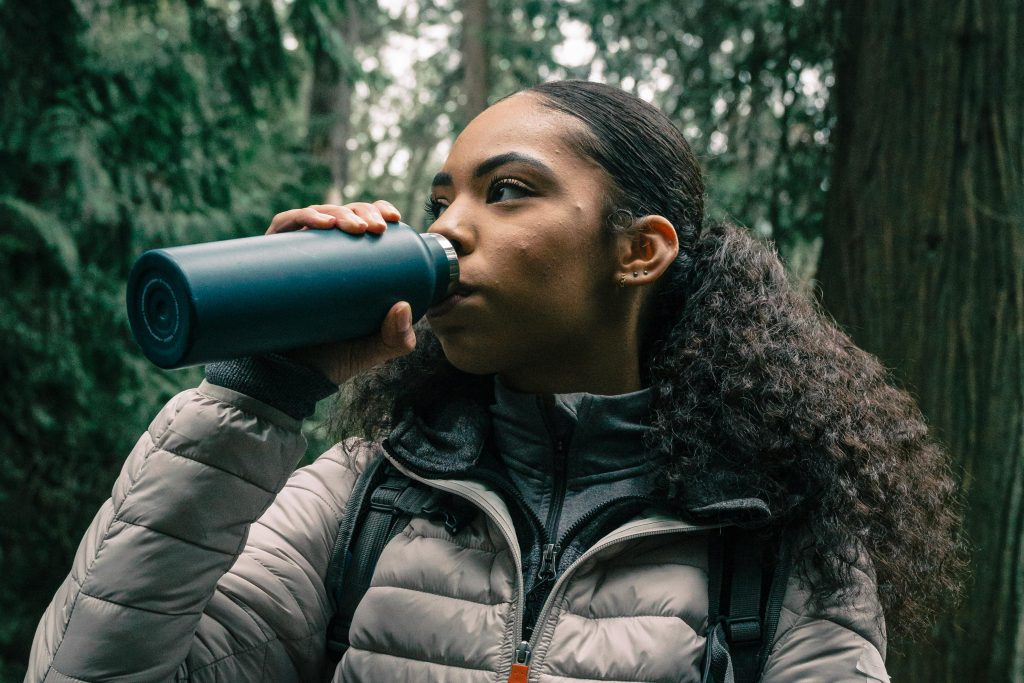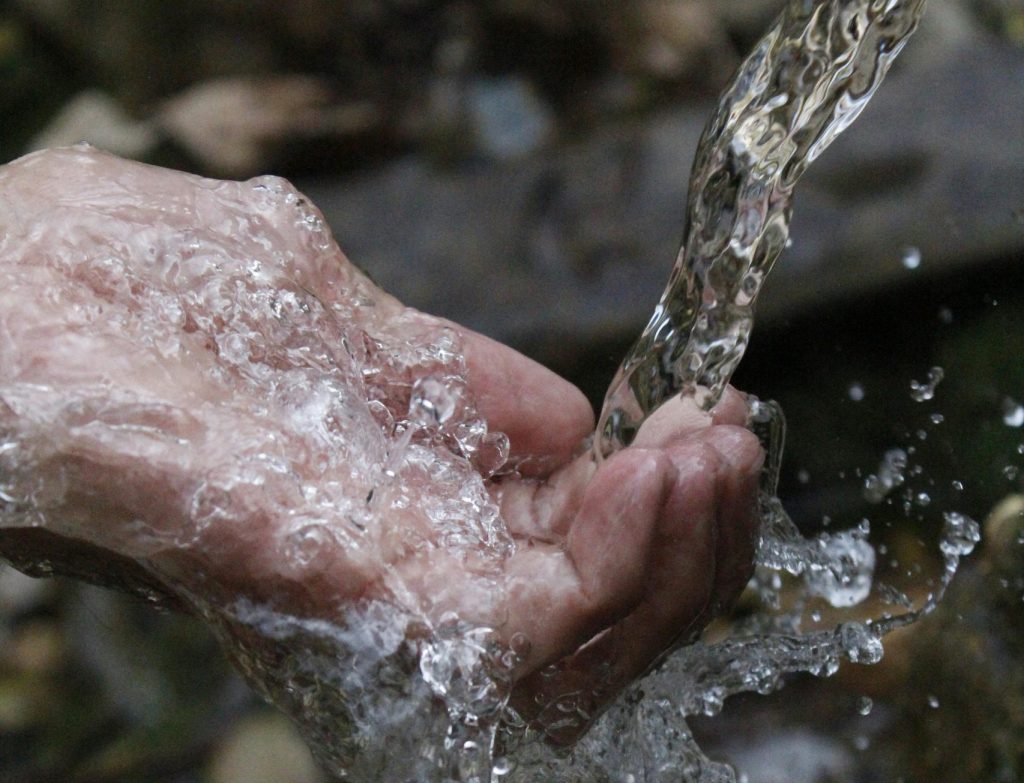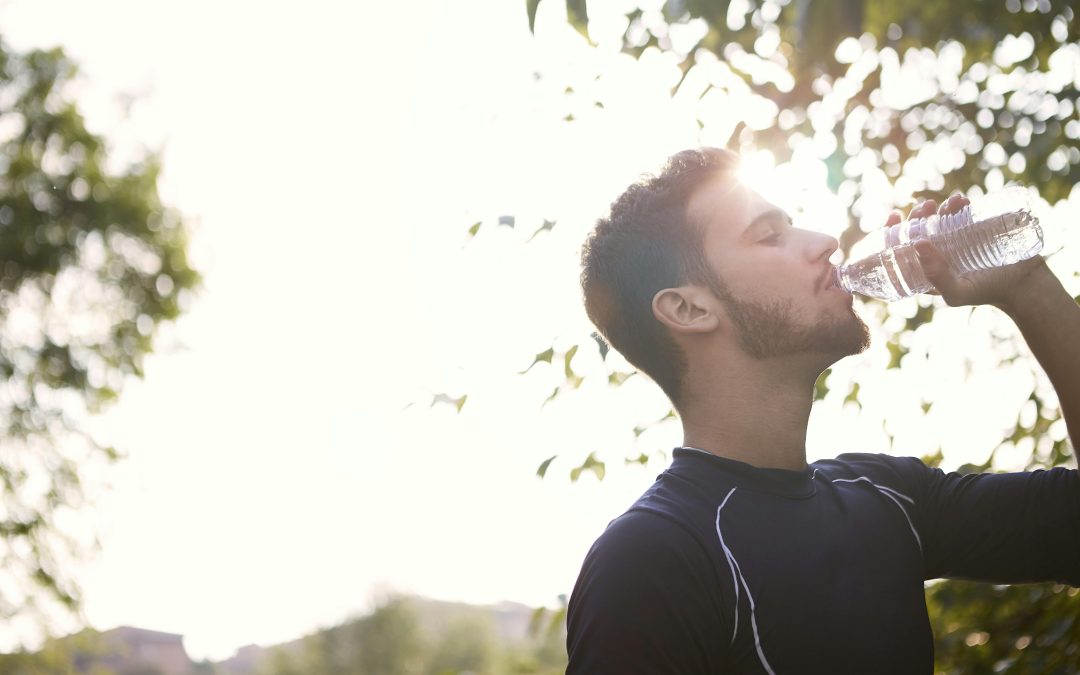Mastering Hydration in the Wild
Lost in Death Valley: A Cautionary Tale
Desert heat. Vanishing water supply. Disoriented by a faulty GPS, Donna Cooper and her companions faced a terrifying reality in Death Valley National Park in July 2010. Their story, chronicled in Reader’s Digest, serves as a stark reminder of the dangers of underestimating hydration in the wilderness.
Beyond the personal narrative, research by Peak Human highlights a more universal truth: even mild dehydration (around 2% body weight loss) can significantly impair physical performance and increase the risk of heat-related illness. (Link to Peak Human article here).
This guide equips you with the knowledge and strategies to avoid a similar fate. Learn how to master hydration in the wild, ensuring your adventures are safe, enjoyable, and fueled by the power of proper water management.
The Reality of Dehydration
 Image via Bureau of Land Management – Utah
Image via Bureau of Land Management – Utah
This scenario, while dramatic, highlights a very real danger faced by outdoor enthusiasts: underestimating their water needs. In this guide, we’ll equip you with the knowledge and strategies to master hydration in the wild, ensuring your adventures are safe, enjoyable, and fueled by the power of proper water management.
Why Water is Your Wilderness Lifeline
Understanding Water’s Critical Role
Water is more than just a refreshing drink; it’s the very essence of life. Our bodies are composed of roughly 60% water, and every cell relies on it to function properly. It regulates body temperature, transports nutrients, lubricates joints, and aids in digestion – all crucial processes for staying healthy and energized during outdoor activities.
Recent research, such as the study conducted by the University of Connecticut, highlights the impact of dehydration on cognitive function. Even mild dehydration can lead to decreased focus, impaired decision-making, and reduced reaction times – qualities you definitely want on your side while navigating the wilderness.
Hydration is crucial for any outdoor adventure, supporting both physical performance and cognitive function. Experts from the Wilderness Medicine Section of the American College of Emergency Physicians underline the necessity of maintaining proper fluid levels to ensure safety, enjoyment, and decision-making capabilities in wilderness settings. Ensuring adequate hydration is foundational for optimizing endurance, preventing altitude sickness, and enhancing overall wilderness experience
 Photo by PNW Production
Photo by PNW Production
Dispelling Hydration Myths
Many misconceptions swirl around water needs during outdoor activities. Let’s debunk some common myths:
- Myth: I only need to drink when I feel thirsty.
- Reality: Thirst is a lagging indicator of dehydration. By the time you feel thirsty, your body is already experiencing some level of dehydration.
- Myth: If I’m sweating a lot, I’m properly hydrated.
- Reality: Sweating is a natural cooling mechanism, but it also leads to fluid loss. Sweating heavily necessitates increased water intake.
- Myth: Drinking sugary beverages is as effective as water.
- Reality: Sugary drinks can actually worsen dehydration and provide a false sense of hydration due to their diuretic effect.
Water Needs Demystified
- Activity Level: Strenuous exercise or hot weather can significantly increase water needs. Aim for an additional 0.5-1 liter (17-34 oz) per hour of activity.
- Individual Factors: Body size, metabolism, and even altitude can influence water needs. Consult a healthcare professional for personalized recommendations.
Why Mastering Hydration Pays Off
Q: Why is proper water management so important for outdoor activities?
A: There are several key benefits to staying hydrated in the wilderness:
- Enhanced Safety: Dehydration can impair judgment and lead to risky behavior. Proper hydration keeps you alert and focused, allowing you to make safe decisions throughout your adventure.
- Boosted Endurance: Water is essential for transporting oxygen and nutrients throughout your body. Being adequately hydrated ensures your muscles and organs function optimally, maximizing your stamina and preventing fatigue.
- Greater Enjoyment: Dehydration can lead to headaches, dizziness, and cramps, detracting from your overall experience. Staying hydrated ensures you feel your best and can fully appreciate the beauty and challenge of your outdoor adventure.
The Bottom Line: By prioritizing water management, you’re investing in a safer, more enjoyable, and ultimately more successful outdoor experience.

Simplifying the Science of Hydration
Understanding Your Body’s Water Needs
While the baseline recommendation is around 2 liters of water per day, individual needs can vary depending on several factors:
-
Activity Level: Strenuous activities like hiking or biking significantly increase your body’s water demands. As your heart rate and exertion level rise, you sweat more to regulate body temperature. This translates to increased fluid loss that needs to be replenished.
-
Climate: Hot and humid environments accelerate sweat production. Conversely, cold weather can lull you into a false sense of security, as thirst cues may be diminished. Regardless of the temperature, staying hydrated is crucial in all weather conditions.
-
Body Size: Larger individuals generally have a higher water content and may require more water than smaller individuals.
-
Metabolism: Your metabolic rate influences how quickly your body processes fluids. A higher metabolism typically means burning through fluids faster, necessitating increased water intake.
A Case Study in Adaptability
In December 2016, a family vacation turned into a survival story in the Grand Canyon when Karen Klein, Eric Klein, and their son found themselves stranded in a snowstorm. Attempting to reach the North Rim, their GPS led them down a forest service road that became impassable. Karen decided to hike for help, enduring a harrowing 30-mile trek in deep snow. She survived on a small amount of food and melted snow for water, demonstrating a profound will to survive. Karen’s ordeal highlights the importance of preparation and understanding the risks associated with hiking in such unpredictable environments. This incident underscores the crucial need for proper planning and respect for natural elements when exploring remote areas like the Grand Canyon. For more on this story and the lessons it imparts, read the full account at Grunge.com
The Science of Hydration: Expert Insights
Dr. Lindsay Baker, a senior principal scientist at the Gatorade Sports Science Institute, suggests a more gradual approach to hydration, stating, “In general, it’s best to sip a little bit throughout the day.” This method, she explains, aids in retaining fluid more effectively, especially when fluid intake is coupled with meals and snacks, as opposed to rapidly consuming large amounts of water which can lead to quick elimination via urination. This insight encourages a steady, consistent hydration practice rather than waiting until thirst becomes overwhelming.
By understanding the factors influencing water needs, you can tailor your hydration strategy for each adventure, ensuring you stay fueled and functioning at your best.
 Photo by Dawson Dauphinais
Photo by Dawson Dauphinais
Your Hydration FAQs Answered
How much water should I carry?
There’s no one-size-fits-all answer, but here’s a guide to get you started:
- Baseline: Aim for 2 liters (half a gallon) of water per day under normal conditions.
- Activity Level: Factor in an additional 0.5-1 liter (17-34 oz) per hour of strenuous activity in hot weather.
- Individual Needs: Consider your body size, metabolism, and the specific climate.
Pro Tip: It’s always better to err on the side of caution and carry slightly more water than you think you’ll need. You can always adjust based on your actual consumption.
How can I conserve water effectively?
Here are some practical tips to maximize your water supply:
- Plan Your Route: Choose trails with known water sources or plan to refill your supplies at designated points.
- Hydrate Early and Often: Don’t wait until you’re thirsty to start drinking. Take regular sips throughout your activity to maintain optimal hydration.
- Seek Shade and Shelter: Avoid direct sunlight and strenuous activity during the hottest part of the day.
- Pack Light: Carrying unnecessary weight increases exertion and water needs.
- Utilize Water Purification Tools: If relying on natural water sources, consider using a water filter or purification tablets to ensure safe consumption.
Remember: By implementing these strategies, you can extend the life of your water supply and minimize the risk of dehydration.
 Photo by Samad Deldar
Photo by Samad Deldar
Conquering Hydration Challenges
Even with careful planning, unexpected situations can arise in the wilderness. Here’s how to tackle common water-related challenges:
Challenge: Elusive Water Source
Sometimes, reliable water sources aren’t readily apparent. Here are some strategies to navigate this obstacle:
- Map It Out: Invest in detailed topographical maps that mark known springs, streams, and lakes.
- Local Knowledge is Power: Consult park rangers or experienced hikers familiar with the area to glean insights on potential water sources.
- Learn to Read the Landscape: Look for signs of moisture like lush vegetation or animal trails leading to water.
- Emergency Techniques: As a last resort, consider techniques like collecting rainwater or dew condensation using survival cloths.
Real-Life Example: Stranded in the Australian Outback after being drugged and left for dead by strangers he had trusted, Ricky Megee found himself in a dire situation with no supplies or means of communication. Faced with the harsh and unforgiving landscape of one of Earth’s most challenging environments, he tapped into his survival knowledge to navigate through his predicament. Prioritizing the search for water, Megee ingeniously collected rainwater and utilized improvised containers to secure this vital resource. Despite the overwhelming odds, his survival instincts propelled him to make use of the sparse resources available, from edible plants to insects, while also constructing makeshift shelters for protection against the elements. Megee’s harrowing experience, surviving for 71 days before being rescued, underscores the incredible will to live and the importance of survival skills in the wilderness (Aussie Survivor).
Challenge: Threat of Contaminated Water
Natural water sources, while appealing, can harbor harmful bacteria or parasites. Here’s how to ensure safe consumption:
- Treat Before You Drink: Invest in a reliable water purification method, such as a portable filter, purification tablets, or a UV purifier.
- Boiling: If other methods are unavailable, bring your water to a rolling boil for at least one minute to eliminate most pathogens.
Remember: When in doubt, always err on the side of caution and treat all natural water sources before drinking.
Real-Life Example: Aron Ralston’s survival story is a profound example of overcoming extreme dehydration. Trapped in Blue John Canyon without water, he survived by drinking his urine and rationing his minimal water supply. His story, detailed in “Between a Rock and a Hard Place” and the film “127 Hours,” showcases remarkable resilience and survival instincts. For more on his and other survival stories, visit Real-Life Survival Stories: Overcoming Extreme Dehydration.
By proactively addressing these challenges, you can overcome potential obstacles and ensure a safe and well-hydrated adventure in the wilderness.
Putting Hydration Strategies into Practice
Now that you’re armed with the knowledge, let’s translate theory into action with practical water management strategies for your next outdoor adventure:
Pre-Trip Planning
- Invest in a Quality Hydration Pack: Choose a comfortable pack with a capacity that allows you to carry enough water for your planned duration and activity level. Consider insulated options for hot climates.
- Research Water Availability: Utilize maps, guidebooks, or online resources to identify potential water sources along your route.
- Pack Purification Tools: Select a water purification method that suits your needs and preferences. Popular options include portable filters, purification tablets, or UV purifiers. Consider the weight, ease of use, and effectiveness of each method for your specific situation.
- Download Apps: Utilize smartphone apps that can help you locate nearby water sources, track your water consumption, and set hydration reminders.
Mastering Hydration Practices
- Start Hydrated: Before setting out, drink plenty of water to ensure you’re well-hydrated at the beginning of your adventure.
- Sip Regularly: Don’t wait until you’re thirsty to drink. Take regular sips throughout your activity, aiming for small but frequent consumption.
- Monitor Your Intake: Keep track of your water consumption and adjust your intake based on factors like activity level, weather conditions, and individual needs.
- Utilize Available Water Sources: If you encounter natural water sources that have been identified as safe, consider refilling your supplies using your chosen purification method.
- Be Resourceful: In an emergency situation, explore alternative water sources like collecting rainwater using a tarp or survival cloth. Remember, these methods should only be used as a last resort and the water should be treated thoroughly before consumption.
Concluding Thoughts
We’ve embarked on a journey through the vital world of wilderness hydration. From the gripping reality of dehydration to the science behind optimal water consumption, you’ve gained valuable knowledge to conquer your next outdoor adventure.
Remember, water is the cornerstone of life, and proper hydration is the foundation for a safe, enjoyable, and successful wilderness experience. By understanding your individual needs, planning your water management strategy, and overcoming potential challenges, you can ensure your body functions at its peak, allowing you to fully immerse yourself in the beauty and wonder of the natural world.
Now it’s your turn! Share your experiences or tips for effective water management in the wilderness. Have you ever encountered a situation where dehydration became a concern? What strategies do you use to stay hydrated on long hikes or camping trips? Let’s continue the conversation and build a community of informed and well-hydrated outdoor enthusiasts!
Featured Photo by Andrea Piacquadio:
H2O graphic by Mohamed Hassan from Pixabay


